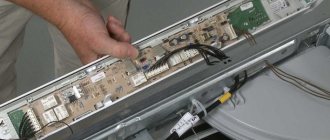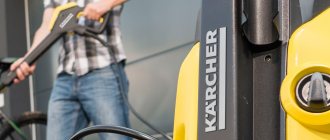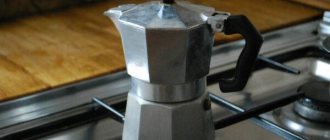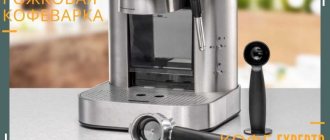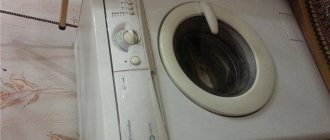In everyday life, we widely use electrical appliances that perform various functions. Some are involved in the cooking process, others wash the dishes, and others help make our life easier.
Recently, many new and very useful devices in everyday life have appeared, the purpose of which is not known to everyone.
Such electrical appliances include a thermopot, a relatively new device, but very useful in everyday life. Having appeared relatively recently, it quickly gained great popularity among the population.
In this article we will tell you what kind of electrical device it is, what its purpose is, how it works, we will talk about the pros and cons, as well as how to use it correctly.
What is a thermopot
Each of us knows well what an electric kettle and thermos are for. The main purpose of a kettle is to boil water. A thermos keeps liquid hot for a long time.
Thermopot combines these two functions. It is a universal electrical device that can simultaneously heat water to the desired temperature and maintain the optimal temperature for a long time. A number of the most advanced models also provide water filtration, making the prepared drink cleaner and healthier.
This device is purchased for the purpose of making tea or coffee, as well as other drinks, brewing food, preparing food for children and other reasons. Having such a multifunctional and practical device nearby is always useful and convenient.
Numerous manufacturers present different models of thermopots on the market, which differ in design features, sizes, some functions and appearance. However, the basic principles on which this device operates are common to all manufacturers.
Energy consumption and power
Many people are concerned about the question: does such a device save electricity, or, on the contrary, spend it many times more than a regular kettle? After all, the thermopot is constantly on and requires power, but how much it consumes is unknown.
An economical thermopot consumes 600 W, and the most energy-consuming one consumes 3000 W. The latter are rare, generally the power fluctuates between 0.6 - 0.85 kW per hour.
A sample with a capacity of 4 liters spends 800 W for a full cycle, and 35 W for constant heating. Whereas a 2 liter kettle consumes 2200 W per boiling.
So the savings are obvious.
At the same time, you should not turn off the device in an attempt to reduce energy costs: it will spend much more kilowatts on full heating than on maintaining the temperature. Even the largest units rarely consume more than 100 W/hour.
Thermopot device
The design of the device is quite simple. In general, it differs little from the design of an electric kettle. As a rule, the thermopot body is made of plastic. There are models with a metal or glass body.
The heating element is closed and has the shape of a spiral or an open disk. Devices with a disk heater are most convenient to use.
The main element of the device is a water tank. In the inner part of the device there is a special metal flask made of high quality stainless steel or glass. Special glass is used that is resistant to damage from abrasive substances. To maintain the temperature for as long as possible, the water tank is covered with materials that do not allow heat to pass through.
Inside the body of the thermopot there is a metal flask into which water is poured. You need to bring it to a boil, and then maintain the set temperature. The user himself chooses the mode that suits him best. To pour water, there is a button at the top of the structure; when you press it, it drains. Therefore, there is no need to lift the device.
The control elements of the thermopot are built-in water filters (not in all models), a hand pump with which you can pour water when the device is unplugged (also not present in all models).
The volume of the thermopot generally varies from 3 to 5 liters. There are larger devices available for sale that allow you to boil up to 8 liters of liquid.
Additional functions
To make using the equipment a joy and cause a minimum of hassle, some thermopots are equipped with auxiliary options:
- built-in carbon filter – ensures purification from impurities and chlorine, and improves taste;
- self-cleaning – eliminates the need to manually remove dirt and lime from the internal surface;
- timer – makes it possible to set the time by which boiling water should be ready;
- 360 degree rotation – allows you to install a thermopot in any corner of the kitchen;
- For ease of use, indicators for turning on, heating, the need to add water and replace the filter are useful.
The liquid crystal display will make operating the device as comfortable and simple as possible. In addition, all information about the state of the unit is displayed on the screen.
There are models that allow you to manage and monitor your condition remotely through a mobile application. In some cases this is really convenient, but consider whether it is worth paying extra for such a feature.
Advantages
Thermopot is a device that is very helpful in everyday life and has a number of advantages:
- The thermopot will boil and heat the water to the required temperature.
- You can set the temperature yourself. As a rule, many of these devices have 4 modes for heating water. There are often devices that have 5 temperature settings.
- It maintains the temperature for at least several hours. The water will remain completely warm, as if the kettle had just been boiled. You can also choose smaller values. This is especially important for large families and families with small children.
- Thanks to the thermopot, you save a lot of time (you don’t have to wait for the water to heat up), as well as electricity (you don’t have to turn on the device every time someone in the family needs hot water).
- Thermopot is heavier and more voluminous than an electric kettle. However, you won't have to move it. All models of thermopots have a special device that supplies water - a built-in electric pump. To pour liquid, you just need to press a button. A number of thermopot models include a hand pump, which can be used to draw water if the device is not plugged in.
- When using a thermopot, you cannot get burned or scalded ; its surface does not heat up.
Flaws
Despite the obvious advantages of these devices, they also have certain disadvantages. These include the following characteristics.
- It will take longer to heat the water than to heat water in a regular electric kettle. This is due to the fact that the capacity of a thermopot is much larger than the capacity of an electric kettle.
- The cost of a thermopot exceeds the cost of a regular electric kettle.
Taking into account the advantages and disadvantages of thermopots, it should be concluded that such devices are more appropriate to use in large families or in offices. For small families, an electric kettle is quite enough.
How does a thermopot work?
First, fill the container with water, close the lid and turn on the device. The heating element begins to work, and accordingly the liquid begins to heat up. When the water boils, the thermal switch in contact with the tank will operate. It will break the electrical circuit, causing the water heating process to stop.
The liquid gradually cools down, this continues until the temperature set on the control panel is reached. For example, you set the temperature to 60 degrees. As soon as the water cools down to this value, the temperature sensor will operate. To pour heated water into a cup, the pump will turn on and begin pumping water out of the reservoir, delivering it to the outlet of the device.
Manufacturer
After all the main characteristics have been selected, you still need to decide which company’s device to give preference to. In this matter, you should focus on your material capabilities, because brands are focused on different consumer segments.
- Maxwell, Supra, Scarlett, Polaris are the most budget devices.
- Kitfort, Panasonic, Oursson, Redmond - the optimal combination of price and quality.
- Zojirushi, Rommelsbacher, Caso, Bosch are expensive models with improved functionality.
At the same time, we must not forget that each manufacturer has at least several varieties of goods in different price categories.
In any case, it is better to choose a well-known brand. This way you can minimize the risk of purchasing a low-quality product.
How to use
Working with this device is very simple. Pour regular tap water into it. This can be done using any containers, for example, purchase a ladle with a volume of about 1.5-2 liters or a jug of the same volume. If there is no special container, pour the liquid into an ordinary cup or jar. Water must be poured to the maximum level indicated inside the device. Please note that the device must not be placed under a tap.
Close the lid of the thermopot tightly, connect the device to the mains and press the “Boiling” button. Next, you just have to wait for the water to boil. Before the water boils, set the heating mode to the highest setting.
When the water boils, you can switch the device to the desired heating mode by pressing the “Select” mode switch button. Temperature conditions for heating water vary depending on the brand of the device. The most commonly used are 4 temperature settings. The device will maintain the temperature at the required level for a long time. When you need to pour water, place the container under the spout of the device and press the corresponding button on the lid.
Temperature conditions
Cheap models of thermopots work on the following principle: as soon as the water cools down to the set limit, the device boils it again. In fact, it turns out that this is an automatic electric kettle.
In more advanced devices the system is different. Here the temperature is constantly maintained at the desired level for a long time.
Temperature adjustment can vary from 40 to 98 degrees. Moreover, some devices have only three or four modes, for example, 60, 90 and 98 degrees. In others, the setting is done using a rotary switch and then you can set any of the values in the allowed range.
What points to pay attention to when choosing a thermopot
When choosing a device, you should take into account its technical characteristics: tank volume, power, fixed temperature, method of supplying boiling water, as well as the presence of additional devices: filters, hand pump and even design.
Of course, you need to take into account the number of family members, this will help calculate the optimal volume of the device. You also need to decide which features are most important to you. For some, the most important indicator is the ability to constantly monitor the temperature, for others - additional functions (the presence of a hand pump, built-in filter, timer), for some, efficiency comes first.
A more detailed article on how to choose a thermopot.
Buying tips
Before purchasing this device, every buyer should answer this question. Why does he need a thermopot? And only after that should you decide on the model of the device.
Also, before purchasing, it is worth considering the volume of the future unit and choosing its heating element. Remember how much free space there is where the device will be installed.
Choose for yourself the best option for the material from which the thermopot is made. Next, it’s worth exploring the additional functions of the device. After all, it may turn out that money will be overpaid for additional functions.
And they simply won't be needed. It would not be a bad idea to ask the characteristics of the unit from the iconic ones (if they have this device) or look at reviews on the Internet.
Housing material
The material of the thermopot body affects two aspects - aesthetic and practical. The metal body of the thermopot is less susceptible to mechanical damage, the outer surface is less abraded during cleaning, and if the body is not painted, it has a natural metal color. A plastic case will not withstand significant mechanical stress, its surface may change its appearance due to careless maintenance, but from an aesthetic point of view it is in no way inferior to a metal one. Whatever material the body of the device is made of, it should under no circumstances become very hot during operation of the thermopot.
Design Features
To become more familiar with the operation of the device, you should find out how the thermopot works. Outwardly, it resembles an electric kettle rather than a thermos, although it may look more bulky and technologically advanced. This similarity is explained not only by the profile and modes of functioning. Many of the design elements are similar to those present in the prototypes:
- the device is assembled in a metal or plastic case;
- a steel or glass flask made of impact-resistant and heat-resistant glass is borrowed from a thermos;
- there is a pair of spiral heaters in tubes, one of them works for boiling, the second is more economical for heating;
- the heating elements are supplemented with a pair of thermal switches that control the temperature, disconnect the power when the maximum is reached and restore the network when it drops to a minimum;
- an important design element is the pump, which can be made in electrical or mechanical versions;
- the electronics are represented by two boards, one is responsible for supplying power, the second is control;
- the control module is connected to an external control panel located on the housing;
- it may contain setting keys, a display, power and drain buttons;
- In addition to the panel, a dosimeter is located on the outside, which allows you to monitor the filling level of the container.
Devices may have different design nuances, but in general the device is the same; the overall design of the thermopot remains similar, regardless of the model and manufacturer.
Schematic diagram
If the thermopot does not work, you need to familiarize yourself with the circuit diagram.
The circuit of this device is not too complicated - even a non-professional electrician can “read” it.
It can be used to investigate the causes of failure of devices from such popular manufacturers as:
- Polaris;
- Vitek;
- Elenberg;
- Scarlett et al.
Schematic diagram
Explanation of the main symbols used in the diagram
Explanation:
- S1 and S2 are temperature switches from the KSD 302 series, the first is located in the middle of the stainless steel tank and is connected in series to transmit a supply voltage of 220 Volts, the second is located in the bottom of the thermopot - current flows through it to the main heating element;
- F1 – thermal fuse;
- TN2 is an additional water heating coil, which should be checked to answer the question why the thermopot does not maintain the temperature;
- relay S1.1 connected in parallel with the reboiling spiral;
- TN1 – spiral of the main heating element;
- VT1, VT2 – transistors on which there is a relay for controlling the on and off time, which open under the influence of a charged capacitor C3;
- C3 is an electrolytic capacitor, charged by pulses from VD6 when the S4 button is briefly pressed;
- K1 – relay winding through which electric current flows and switches S1.1;
- C1, C2, VDS1 – voltage rectifiers that supply power to the time relay circuit.
Notes:
- C1 serves as a damper for excess voltage;
- C2 – smoothes out electric current ripples resulting from the operation of the bridge rectifier VDS1;
- Some units do not use C1, but a step-down transformer.
Main selection criteria
Thermopot is a technically complex device. In order for the purchase to bring only positive aspects during operation, the choice of equipment should be approached extremely responsibly, having studied the main criteria that you need to pay attention to.
Advice! Considering that thermopots appeared not so long ago, when choosing a good model, it is better to give preference to new products from the world's leading brands: they correct all the mistakes that were made when the first devices were released. Large enterprises have sufficient capacity for high-quality assembly of equipment.
Tank volume
The indicator varies from 1.5 to 8 liters. When choosing a suitable volume, you need to start from the number of people who will often use the device:
- for a small family of two or three people, a tank of up to 3 liters is sufficient;
- for a large family or if you need constant access to hot drinking water, the optimal value is 3-4.5 liters;
- devices with a capacity of more than 5 liters are intended for installation in public catering outlets, offices or at public events.
Choose the volume to suit your needs
Power
One of the key advantages of thermal pots over electric kettles is significant energy savings. The maximum power of the device, reaching 1000 W, is needed only to heat the water; To further maintain the desired temperature, 10 times less energy is consumed - that is, no more than 100 W per hour. Not having to bring the liquid to a boil every time leads to savings.
Important! It is a mistake to believe that a product with high power will heat water faster than a low-power one. Numerous studies confirm that this parameter does not greatly affect the heating rate.
A heating element
Most models are equipped with two heating elements at once - one is needed to bring it to the set temperature, and the second is needed to maintain this value. The heater can be open, closed or disk:
- Spirals. Open type heaters that heat water faster than others. Ensures quiet operation of the device. A significant drawback is that due to constant contact with a liquid medium, the spiral quickly becomes covered with plaque, which must be constantly cleaned. In this regard, such an element is not used in expensive devices;
- Disks. Such installations are more practical and versatile; experts recommend this particular heating option. The element is a disk located at the bottom of the tank, to which electrical contacts are connected.
Spiral Disc
Water pouring method
This parameter ensures ease of use of the installation. The built-in pump allows you to pour water by simply placing a cup near the spout. To do this, use one of two methods - mechanical or electronic:
- Hand pump. To pour water into a cup, you need to pump the pump manually. Thus, the device operates even if there is no electricity;
- Electric pump. This method does not require any effort - just press a button and water will be poured into the dishes. The downside is the inability to use it if the lights are turned off.
Hand pump Electric pump
Advice! It is best to purchase a unit with two supply methods at once. This will allow you to use a specific method at your discretion, regardless of the availability of electricity at home.
Material
Different components are made from different materials - it can be plastic, glass, metal. Buyers pay attention to the practicality and visual appeal of the device; of course, all this affects the cost:
- Plastic. Used only for exterior decoration - housing. It has an attractive design, does not require special surface care, and the cost of such models is usually cheaper than other types. Among the disadvantages, it is worth noting the low impact resistance; over time, the plastic case may lose its visual appeal if handled carelessly;
- Metal. A universal material used for the manufacture of body and flask. Has excellent technical and operational characteristics. The metal surface looks stylish and fits into any kitchen interior, and the reservoir does not have a negative effect on the liquid. The disadvantages are that such models are more expensive than plastic ones, and the coating is prone to scratches;
- Glass. Most often used to create flasks, but some manufacturers make completely transparent glass thermopots. The material is environmentally safe and aesthetically pleasing, but such products are more fragile and retain heat less than others. Moreover, they are not cheap.
Plastic case Material: metal Glass case
Important! Whatever material you choose, it must meet sanitary and hygienic standards and withstand high temperatures!
Operating modes
Budget models are equipped with only one or two programs, while more advanced ones have up to six useful functions. The presence of several operating modes allows you to set the appropriate temperature level - for boiling, maintaining, selecting the desired value, and also ensures the convenience and safety of using the unit - water supply, re-boiling, and so on. Most devices allow you to adjust the temperature from 40 to 95 degrees Celsius:
- Boiling water. A standard function that often works automatically - just connect the device to the network and pour water into the tank;
- Temperature maintenance. The mode uses minimal power to ensure that the liquid does not cool down and is constantly at the desired level;
- Setting the temperature. More advanced devices are equipped with this option. To do this, you need to set the required value on the panel yourself. After boiling, the liquid will cool to this value and will be maintained at the selected level as long as required. Approximate temperature values for specific purposes:
- 40-50 degrees - for preparing baby food;
- 60-80 degrees - for fans of green tea;
- 95 degrees will be needed to prepare black tea or coffee;
- Water supply. A comfortable function inherent in thermopots with an electric pump. To pour water into a cup, just press the button and hold it until the glass is full;
- Re-boiling. This mode is useful when you add raw water while the device is operating. If there is too little liquid, the water will not cool down and boiling will not start automatically.
Number of heating elements
Models are equipped with one combined or double heating element. There is no significant difference in power consumption or heating rate. The choice is made in favor of a more suitable device based on financial capabilities and taste preferences:
- With combined heating element. One part is installed that performs the functions of both heating and maintaining temperature;
- With double. It is distinguished by the presence of two components: one boils water, the second maintains the temperature at a given level.
Control Panel
Serves to select the required operating mode. Typically the panel is equipped with buttons that perform their specific tasks and a display that shows the selected program or error code.
Thermopot control panel
More advanced models are equipped with a touch panel. The unit control can be manual or microprocessor-based:
- Manual. Allows you to pour water into dishes when the lights are turned off;
- Microprocessor based. All actions are performed by pressing the desired button.
Healthy! Regardless of the cost of the device and the type of control panel, all thermopots are equally easy and convenient to use. The interface of the unit is intuitive for everyone.
Safety
Considering that the operation of the device is related to humidity and connection to the electrical network, when choosing a thermopot for your home, it is important to check the availability of functions that allow you to maintain safety during operation.
Choose a thermopot with safety features
Important! Operating the unit with an empty flask may cause a fire!
- Switching on is blocked when the water level in the tank is low. If you miss the moment and do not add liquid to the tank in time, and the device continues to work, this can be dangerous not only for the installation itself, but also for people’s lives. This function automatically turns off heating if there is not enough water in the container;
- Automatic latching and locking of the cover from accidental opening when the device is dropped. The option prevents boiling water from spilling on the surface of the table or floor if it falls. This is especially important for devices with large capacities. Boiling water can not only ruin finishing materials, but also lead to serious skin burns;
- Blocking the valve from accidental pressing. Thanks to this function, the likelihood of spilling hot water and getting burned is minimized. If there are children in the house, it is better to take care that there is a lock in the product;
- Overheat protection. It works similarly to blocking the switch on when there is insufficient amount of liquid in the tank, but even in the case of a filled flask. The program turns off heating and reheating if the temperature reaches critical levels. This will prevent breakdowns and extend the life of the device;
- Locking the lid when the device is turned on. To avoid getting burned by steam or boiling water, the lock will prevent you from opening the lid if the device is connected to the network.
Recommendation! Security features are only useful if they work properly. It is better to check their performance before making a purchase.
Package
Thermal heater DEXP THP-5500 is packed in a rectangular cardboard box. Dimensions 45x35x27 cm. The height of the thermopot itself is approximately 40 cm.
Basic information is written on the box
The top is decorated with a very beautiful pattern. There is a plastic handle here for easy transportation of the box.
Everything fits very tightly in the box itself. To pull out its contents, you need to make a decent effort.
The thermopot is well fixed with polystyrene foam. A recess is made for the spout and handle.
On the outside, a small niche is made in the foam (parallel to the spout). The cord is placed here.
The thermopot itself is tightly wrapped with film. The likelihood of scratching the surface during transportation is minimized.
User manual and warranty card.
Cord 110 cm long. Plug type F, with grounding.



